Introduction
Farewell Erin, Welcome Zoe. Earlier this month we bade farewell to Erin Taylor who is now settling in at the Institute of Food Science and Technology. In her place we welcome Zoe Daniel (pictured below) who joins us from the Royal Pharmaceutical Society. She is fast picking up the reins and we look forward to working with her.
During the last month we have negotiated two additional 'Associations' with the British Institute of Agricultural Consultants (BIAC) and the Commercial Horticultural Association (CHA). Apart from mutually exchanging information and advertising each others events, these entitle members of the SCI Horticulture Group to attend meetings of these organisations on the same basis as their own members. In the case of CHA this includes discounts on exhibition stands at many of the shows they attend.
As this is the last Newsletter of 2010 can we take the opportunity of wishing all members and readers a very happy Festive Season. We apologise in advance that our festivities may result in the first issue of 2011 being a little late.
Editor
Strong Poisons…

In May 2006, a particularly gruesome murder took place in Cornwall. The mutilated body of Peter Solheim, parish councillor, was found in the sea. He had been drugged, bludgeoned and left to drown. Beyond his public concern for his neighbours, it transpired that Peter Solheim's private life involved paganism, witchcraft and pornography. He had named his house 'Valhalla' (Hall of the Dead). A dead elder tree in his garden housed models of ravens. His private life was complicated. He had a wife, and a long-term mistress, Margaret James, on whom suspicion fell regarding his death.
Enter David Whalley, the expert witness, summoned to provide evidence for the defence. His remit was to evaluate any plant material that James might be accused of using to drug her lover, before disposing of him. There were many commonplace plants in Peter Solheim's garden with toxic properties, and David photographed the lot. As did the two police officers who accompanied him. 'They perched on my shoulders' he told the meeting. 'Whatever I snapped, they snapped.' Other than the usual poisonous suspects (conifers, Hypericum, honeysuckle, ferns, buttercup, elder, Cotoneaster), which grace the average garden, he found a toadstool, mauve-capped inocybe (Inocybe geophylla var lilacina). There were home-made besom brooms in the garden shed, and an area where the local coven might have run widdershins (reciting the Lord's Prayer backwards). Not your average garden.
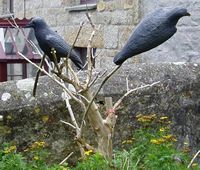
Plants have existed on our planet far longer than humans; yet they've evolved to generate complex molecules that affect our life. Dr Alison Foster described a number of plants, many of which we might find in our gardens, on local waste ground and in the places we visit. She quoted the Amerindian proverb; 'Eat a little and go to sleep, eat some more and have a dream. Eat some more and never wake up.'
Most of the species Alison described are members of the family Solanaceae. They include Atropa belladonna, Datura stramonium, Mandragora officinarum and Hyoscyamus niger.
- Atropa belladonna : Deadly Nightshade. Want to attract your lover? Use Atropa drops, and your pupils will dilate (a sign of attraction). Medicinally, extracts are used to check your retina if you're diabetic. It's also an antidote to Sarin if you happen across a nerve gas attack.
- Datura stramonium : Thornapple; Jimson Weed. Pendulous white flowers; fruits like green rambutans – but don't think of eating them! Anaesthetic; used in divination trances.
- Hyoscyamus niger : Henbane. Chequered cream/purple flowers. Dr Crippen used the extract scopolamine to poison his wife, before fleeing with his mistress Ethel le Neve across the Atlantic. Thanks to Marconi's new technology, he was caught.
- Mandragora officinarum : Mandrake. Its roots are supposed to resemble human limbs. In the Harry Potter books, potting up juvenile mandrake plants necessitated wearing ear-muffs, so trainee wizards didn't hear the shrieks mandrakes utter when uprooted.
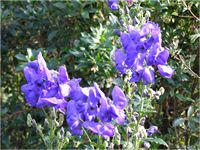
The detective story moves on. I pity Lord Peter Wimsey and Commander Dalgleish in the teeth of the evidence. Life is so much easier in fiction.
David Whalley is the lead consultant for David Whalley & Associates.
Dr Alison Foster is a Glasshouse Horticulturist at the University Botanic Gardens, Oxford.
Plant of the Month
Ilex aquifolium - European Holly, Aquifoliaceae
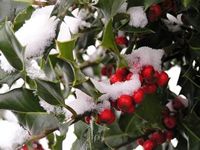
Holly trees are dioecious, meaning that male and female flowers occur on separate trees. Confusingly there is a male cultivar called 'Golden Queen' and a female cultivar called 'Golden King'! In order to have a good display of berries on most trees, some male flowering trees must be planted nearby. The berries are technically a drupe that when first ripe are still very bitter and so are rarely eaten by birds until after a frost which makes them more palatable. Holly wood is dense and can be sanded very smooth and so was traditionally used as the spinning rod in 19th century looms as it was much less likely than other woods to snag on the fibres. Holly trees form excellent hedges as well as specimen trees, they are resistant to honey fungus and will respond well to hard pruning as well as regenerate after a fire. They make excellent havens for wildlife – the flowers are bee pollinated, the berries provide food for the birds as mentioned already and because they are evergreen are good refuges at all times of the year.
Medicinal Plant of the Month
Ilex paraguariensis – Yerba maté, Aquifoliaceae
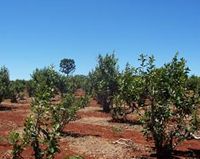
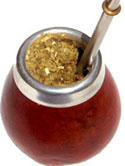
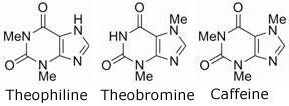
Alison Foster
University of Oxford Botanic Garden
Horticulture Industry News
For the very latest horticultural news follow us on Facebook and or
Twitter.
SOB responds to Defra Natural Environment White Paper
The Society of Biology has responded to the Department for Environment, Food and Rural Affairs' White Paper consultation, 'An invitation to shape the Nature of England'. They have stressed the importance of valuing whole ecosystems, developing policies at appropriate scales, and the importance of a national-level vision and policy frameworks. They also stressed the need for sustainable agricultural development, protection of biodiversity and support for the underpinning long-term data sets and expertise which monitor our environment.
Oxford Botanic Garden lectures
Oxford Botanic Garden is running a series of evening lectures - for details see the eEvents calendar.
Podcasts of the first two lectures are now available:
Lecture 1: The Botanic Garden - Your Modern Medicine Cabinet by Alison Foster
Lecture 2: Streptomyces in Nature and Medicine: The Antibiotic Makers by Sir David Hopwood. More
Breeding durable virus-resistance into cabbages
A new partnership between researchers at the University of Warwick and plant breeders at Syngenta Seeds has been established. This will exploit research, led by Dr John Walsh of the University of Warwick, which uncovered the genetic basis of remarkable broad-spectrum resistance to a viral infection that affects leafy and arable brassica crops including broccoli, cauliflower, cabbage, kale, swede and oilseed rape. Turnip mosaic virus causes significant reductions in yield and quality, often leaving an entire crop unfit for marketing; it is the most important pathogen of brassicas in some parts of the world. The resistance will increase the yields, quality and reliability of crops.
William Sinclair buys Growing Success Organics
Growing media supplier William Sinclair has bought the assets and trade of garden care product company Growing Success Organics (GSO) from Monro Horticulture. GSO has become a market leader in garden-safe chemicals and supplies its range of gardening products to a customer base including Homebase and B&Q.
New business model for Unilever
Consumer products giant Unilever has unveiled a 'new business model' putting sustainability at the heart of its global operations. It pledged to halve the environmental impact of its products while doubling sales over the next 10 years. Unilever made three overarching commitments to achieve by 2020:
- Cut by 50% the environmental impact of its products in terms of water, waste and greenhouse gases
- Source 100% of its agricultural supplies from sustainable sources
- Improve the health and well-being of one billion people across the world. More
James Hutton Institute
The new 'super research institute' to be formed from SCRI in Invergowrie, and Aberdeen's Macaulay Land Use Research Institute, is to be named in honour of the Scottish Enlightenment science pioneer, James Hutton. Hutton is internationally regarded as the father of modern geology and one of the first scientists to describe the Earth as a living system; his thinking on natural selection influenced Charles Darwin in developing his theory of evolution.
The James Hutton Institute will bring together existing Scottish expertise in crop research, soils and land-use, and will make a major contribution to the study of key global issues, such as food and energy security, biodiversity, and how climate change will affect the way we use land and grow crops. The new organisation will begin operations in April 2011. More
Dow licenses root technology
Dow AgroSciences has entered into an exclusive license agreement with Plant Bioscience Limited (part of the John Innes Centre, JIC) for technology that enhances the root systems of plants with important implications for crop improvement. The commercial license covers a range of important agricultural crops.
The technology was developed by Dr Liam Dolan and his colleagues at JIC. The team cloned and characterized genes which may play vital roles in anchorage, water use and nutrient uptake in plants. The genes are highly conserved among land plants and the technology has already been shown to be effective in enhancing root systems in transgenic plants of major crops around the world.
Sexual confusion aids insect control
Southampton-based company, Exosect, have pioneered the use of a charged wax powder soaked in female pheromones, which is then attached to the males. Sprayed in a fog over the crops, it makes the male pests go after other males. 'I'm sure they found it a bit of a surprise when it was first used,' says Exosect chief executive Martin Brown. Exosect's electrostatic powder is now being used in the Punjab and West Bengal in India to fight rice stem borers. More
Support grows for GM
More than 50% of Europeans are in favour of biotechnology, according to the latest survey of EU opinions. The European Commission's Maive Rute told the Crop World conference that the latest EU barometer survey showed a softening of opinions towards the technology. And 53% of respondents said they see the value of, and supported, biotechnology and believe it can bring many benefits to society. However, Ms Rute, the Commission's director for biotechnologies, food and agriculture research, warned support was less strong for GM food crops than other applications of biotechnology, such as the non-food products or environmental benefits. Support varied across the EU but was strongest in Estonia, where 75% supported the technology, and weakest in Austria, where only 30% were in favour.
Better Iris cut flowers
Dutch Iris flowers have a short display life and often fail to open completely after dry transport or storage. Scientists at the University of California claim that treating stems of 'Discovery' Iris with a combination of the plant hormone Gibberellin (GA3) and sucrose ensured that a second flower opened on 90% of stems. Having two flowers opening instead of one may add a novel feature to flower displays (Floraculture International, October 2010).
Quote of the Month
'I believe one of the most important jobs I have as President is to restore science to its rightful place.'
Barack Obama, President of the United States
Events Calendar
Other Events of Interest
Growtech Eurasia
2 - 5 Dec 2010, UK Pavilion by Commercial Horticultural Association
Antalya, Turkey
Ideotypes - is the understanding of physiology relevant to the future of plant breeding?
7 Dec 2010, Association of Applied Biologists
Reading, UK
Water and nitrogen use efficiency in plants and crops
15 -16 Dec 2010, Association of Applied Biologists
Grantham,UK
Stress Responses – molecules, organisms, environments
4 - 7 Jan 2011, British Ecological Society, Society for Experimental Biology, Biochemical Society
London, UK
Adapting Conservation to a Changing Climate
11 - 12 Jan 2011, British Ecological Society & Natural England
London, UK
Advancing your Food Career
11 Jan 2011, Institute of Food Science & Technology
Cardiff, UK
Tropical Plant Industry Exhibition
19 - 21 Jan 2011, Florida Nursery, Growers & Landscape Association
Fort Lauderdale, USA
IPM Essen
21 - 25 Jan 2011, Messe Essen
Essen, Germany
Interaction of Pesticide Application and Formulation on Residues in Fruit and Vegetables
9 Feb 2011, Association of Applied Biologists
Jealotts Hill, UK
Horticulture of Opium Poppy
7 - 11 Feb 2011, International Society for Horticultural Science
Lucknow, India
GAN Trade Show
9 Feb 2011, Golden Acres Nursery
Bournemouth, UK
Salon du Vegetal
15 - 17 Feb 2011, UK Pavilion by Commercial Horticultural Association
Angers, France
Grower of the Year Awards
17 Feb 2011, Haymarket Events
London, UK
Crop Protection in Southern Britain
23 Feb 2011, Association of Applied Biologists
Impington, Cambridge, UK
Global Conference on Entomology
5 - 9 Mar 2011
Chiang Mai, Thailand
Sustainable Vegetable Production in South East Asia
14 - 17 Mar 2011, International Society for Horticultural Science
Salatiga, Indonesia
New Ag International Conference & Exhibition
15 - 17 Mar 2011, New Ag International
Cairo, Egypt
Wild Relatives of Subtropical and Temperate Fruit and Nut Crops
19 - 23 Mar 2011, International Society for Horticultural Science
Davis, CA, USA
Forests and Global Change
28 - 30 Mar 2011, British Ecological Society
Cambridge, UK
Organic Matter Management and Compost Use in Horticulture
4 - 7 Apr 2011, International Society for Horticultural Science
Adelaide, Australia
Systems Approaches to Crop Improvement
14 - 15 Apr 2011, Association of Applied Biologists
Rothamsted, UK
Vegetation Management
27 - 28 Apr 2011, Association of Applied Biologists
Sheffield, UK
If you would like to advertise a forthcoming event please contact communications@soci.org
Horticulture Group Contact Details
For submitting ideas or to volunteer to be part of a committee or a group, please contact:
Acting Chairman - Peter Grimbly
Meetings Secretary - Marion Stainton
Minutes Secretary - Margaret Waddy
Newsletter co-ordinator - Sue Grimbly, E: scihortigroup@btinternet.com
SCI contact - communications@soci.org T: +44(0)20 7598 1500
